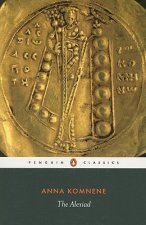
Kód: 04477011
Japan, China, and the Growth of the Asian International Economy, 1850-1949
Autor Kaoru Sugihara
Modern Asian economic history has often been written in terms of Western impact and Asia's response to it. This volume argues that the growth of intra-regional trade, migration, and capital and money flows was a crucial factor tha ... celý popis
- Jazyk:
 Angličtina
Angličtina - Väzba: Pevná
- Počet strán: 312
Nakladateľ: Oxford University Press, 2005
- Viac informácií o knihe

Mohlo by sa vám tiež páčiť
-

Effective Ecological Monitoring
59.40 € -

Bittersweet
13.92 € -

Initiations-Erkenntnis
72.61 € -

Das neue Vergaberecht, elektronische Ausführung, CD-ROM
207.61 € -

Krotkie bajki dla zmeczonych rodzicow
3.47 € -59 %
Darčekový poukaz: Radosť zaručená
- Darujte poukaz v ľubovoľnej hodnote, a my sa postaráme o zvyšok.
- Poukaz sa vzťahuje na všetky produkty v našej ponuke.
- Elektronický poukaz si vytlačíte z e-mailu a môžete ho ihneď darovať.
- Platnosť poukazu je 12 mesiacov od dátumu vystavenia.
Viac informácií o knihe Japan, China, and the Growth of the Asian International Economy, 1850-1949
Nákupom získate 918 bodov
 Anotácia knihy
Anotácia knihy
Modern Asian economic history has often been written in terms of Western impact and Asia's response to it. This volume argues that the growth of intra-regional trade, migration, and capital and money flows was a crucial factor that determined the course of East Asian economic development. Twelve chapters are organized around three main themes. First, economic interactions between Japan and China were important in shaping the pattern of regional industrialization. Neither Japan nor China imported technology and organizations, and attempted to "catch up" with the West alone. Japan's industrialization took place, taking advantage of the Chinese merchant networks in Asia, while the Chinese competition was a critical factor in the Japanese technological and organizational "upgrading" in the interwar period. Second, the pattern of China's integration into the international economy was shaped by the growth of intra-Asian trade, migration, and capital flows and remittances. While the Western impact was largely confined to the littoral region of China, intra-Asian trade was more directly connected with China's internal market. Both the fall of the imperial monetary system and the rise of economic nationalism in the early twentieth century reflected increasing contacts with the Asian international economy. Third, a study of intra-Asian trade and migration helps us understand the nature of colonialism and the international climate of imperialism. In spite of the adverse political environment, East Asian merchant and migration networks exploited economic opportunities, taking advantage of colonial institutional arrangements and even political conflicts. They made a contribution to national and regional economic development in the politically more favourable environment after the Second World War, by providing the valuable expertise and entrepreneurship they had accumulated prewar. The character of the international order of Asia, governed by Western powers, especially Britain, but shared also by Japan for most of the period, was "imperialism of free trade", although it eventually collapsed by the late 1930s.
 Parametre knihy
Parametre knihy
Zaradenie knihy Books in English Humanities History Regional & national history
371.60 €
- Celý názov: Japan, China, and the Growth of the Asian International Economy, 1850-1949
- Autor: Kaoru Sugihara
- Jazyk:
 Angličtina
Angličtina - Väzba: Pevná
- Počet strán: 312
- EAN: 9780198292715
- ISBN: 0198292716
- ID: 04477011
- Nakladateľ: Oxford University Press
- Hmotnosť: 617 g
- Rozmery: 242 × 162 × 23 mm
- Dátum vydania: 24. March 2005
Obľúbené z iného súdka
-

Hundred Years' War on Palestine
12.08 € -24 % -

Ten Myths About Israel
12.59 € -16 % -

Strange Death of Europe
16.58 € -16 % -

Rise And Fall Of The Third Reich
22.01 € -23 % -

Citizens
22.01 € -23 % -

Last Voyage of the Lusitania
20.68 € -

Voynich Manuscript
41.27 € -

Moshe Dayan
27.34 € -9 % -

The Fourth Turning
20.68 € -1 % -

General's Son
20.27 € -4 % -

Reverence for Wood
9.21 € -19 % -

Yitzhak Rabin
16.58 € -10 % -

Hell's Cartel
21.19 € -13 % -

Interpreting Our Heritage
30.21 € -

Paradise Lost
12.79 € -24 % -

Games without Rules
19.25 € -6 % -

Voices of the Foreign Legion
17.40 € -5 % -

American Nations
16.69 € -14 % -

Lynching in the New South
34.30 € -

City of Fortune
14.43 € -23 % -

Thirteenth Tribe
16.89 € -

Twilight of the Romanovs
38.20 € -23 % -

Habsburg Monarchy 1809-1918
16.58 € -23 % -

Ethnic Cleansing of Palestine
14.43 € -23 % -

Decline and Fall of the Roman Empire
5.93 € -21 % -

Palestine
20.27 € -21 % -

The Secret Diaries Of Miss Anne Lister: Vol. 1
13.61 € -14 % -

Giza Power Plant
16.07 € -16 % -

The Balkans, 1804-2012
22.01 € -23 % -

Age Of Revolution
16.58 € -23 % -

Millennium
13.20 € -24 % -

Alexiad
17.81 € -20 % -

Heraclius, Emperor of Byzantium
33.38 € -18 % -

1948
24.68 € -10 % -

Annals of Imperial Rome
14.43 € -23 % -

Strike and Hold
30 € -3 % -

Diana: Her True Story - In Her Own Words
11.05 € -23 % -

How to be a Victorian
14.43 € -23 % -

The Oxford History of Ancient Egypt
15.46 € -23 % -

Londoners
11.26 € -25 % -

History of Japan
16.48 € -18 % -

Illustrated Encyclopedia of Uniforms of the American War of Independence
22.01 € -23 % -

Olympic, Titanic, Britannic
30.31 € -15 % -

Medieval Monsters
11.15 € -23 % -

Secret History
12.28 € -23 % -

The Thirteenth Tribe
12.69 € -

Footnotes in Gaza
27.34 € -13 % -

Biggest Prison on Earth
14.43 € -23 % -

Great Gatsby (Wisehouse Classics Edition)
16.17 € -37 %
Collection points Bratislava a 2642 dalších
Copyright ©2008-24 najlacnejsie-knihy.sk All rights reservedPrivacyCookies



 15549 collection points
15549 collection points Delivery 2.99 €
Delivery 2.99 € 02/210 210 99 (8-15.30h)
02/210 210 99 (8-15.30h)